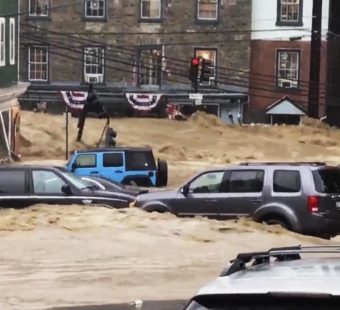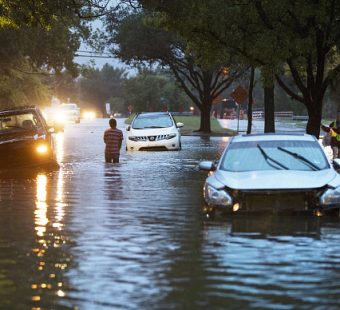
CAS Research Clarifies Role of “Spatial Dependence” in Flood Risk
By Max Dorfman, Research Writer, Triple-I (02/24/23)
It may seem like a no-brainer to say geographies that are near each other share certain risks – particularly when talking about flood risk, which doesn’t respect artificial boundaries like ZIP Codes. But the ability to quantify such intuitive relationships is critically important to understanding and addressing such perils.
Recent research by the Casualty Actuarial Society (CAS) advances this effort. In a study titled “Climate, Spatial Dependence and Flood Risk: A U.S. Case Study,” CAS researchers have created spatial dependence models for 292 U.S. watersheds spanning the period 1979-2018, with a particular focus on economic flood loss.
“Spatial dependence” refers to the “the propensity for nearby locations to influence each other and to possess similar attributes.” The question the researchers were trying to answer was not whether this propensity exists, but, rather, its significance to rising flood-related losses relative to other factors, such as population trends.
Floods caused an estimated $76 billion in global damages in 2020 and constitute nearly two-thirds of all presidential declared disasters in the United States. It is anticipated that by 2050, national scale high tide flooding will occur an average of 45-70 days per year. These long-term forecasts are expected due to an average sea level rise of around a foot in the U.S, according to the National Oceanic and Atmospheric Administration (NOAA).
“While it may be unclear if the physics of flooding is changing from climate change,” the paper says, “there is a clear case that the economic costs of flooding are trending up.”
With this in mind, the researchers simulated several potential scenarios to account for shifts in spatial dependence occurring from changes in climate or exposure. Using data on flood-related economic losses, historical climate, Census population, and geological characteristics, the researchers parsed how climate risk and non-climate risk independently affect this rise in flood damage.
They concluded that:
- Flood losses exhibit spatial dependence that requires spatial statistical models;
- Climate variables are partial drivers of increased frequency and severity; and
- Measures of spatial dependence have been changing over time.
And, through a simulation study, the authors write, “We lay a groundwork to disentangle climate and non-climate drivers of these changing measures of spatial dependence.”
Actuarial research like this will be essential to the insurance industry’s ongoing efforts to predict and prevent climate-related damage and loss.
Learn More:
Facts + Statistics: U.S. Catastrophes
Facts + Statistics: Hurricanes
Stemming a Rising Tide: How Insurers Can Close the Flood Protection Gap
Peril in Perspective: New Book Untangles Disaster Risk for Lay and Professional Readers
Triple-I Non-Resident Scholar Discusses “Finding the Sweet Spot” in Disaster Protection



